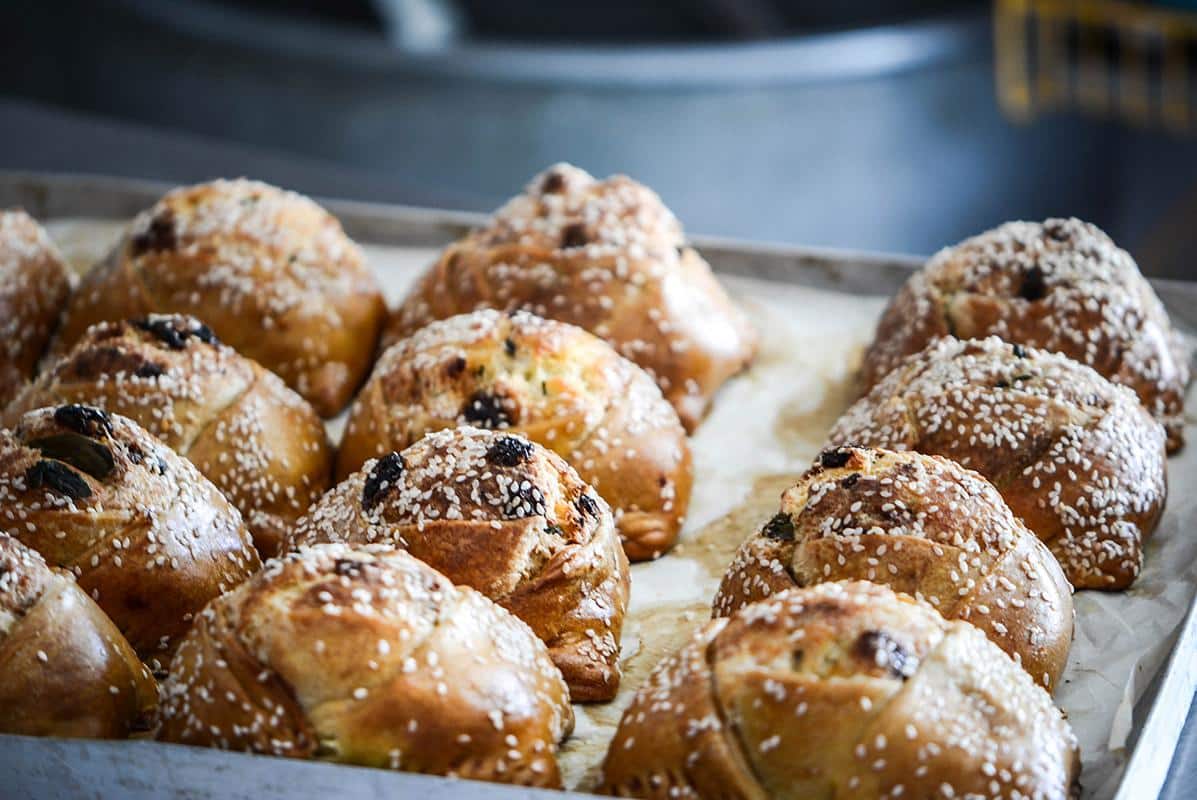Easter is a day of celebration, and in Cyprus the end of Lent is marked with a great feast that includes everything from the more classic avgolemono soup made with chicken broth, egg yolks, and lemon juice to the more traditional magiritsa made with lamb offal, followed by the cracking of the red eggs, which symbolise Christ’s resurrection.
Although the Easter bonfire ritual is intended to see the faithful gather outside the churchyard and burn an effigy of Judas, the tradition has spiralled in recent years as the competition to outdo the neighbouring community’s bonfire has resulted in injuries, with members of the public speaking out against what they see as a dangerous custom.
Traditions abound on Easter Sunday, as the lamb is prepared in the early hours of the morning to be roasted on a spit, while some prefer the more traditional pork souvla. Family members assemble around a huge table, abandoning their healthy routines for another day of overindulgence that will most certainly leave them feeling bloated and uncomfortable.
The holiday is typically marked by lively music, dancing, or, in our case, playing board games – a popular South African pastime – and the exchange of gifts, chocolate eggs, sweet tsourekia, and the renowned flaouna – a cheese-filled pastry with raisins and a sesame seed topping.
The making of Cyprus’ Easter delicacy is a family legacy that has been passed down from generation to generation, although the taste and method of preparation may differ depending on whatever section of the island you are from or may be visiting.
These pies are traditionally prepared in a clay oven after members of the family have gathered to make them. Although this tradition is still practiced today, flaounes are sometimes baked at home in a standard oven if small quantities are put together, or they are often taken to a nearby bakery to be cooked in commercial ovens if large quantities are made.
Flaounes can be made with or without raisins, salty, semi-sweet, or excessively sweet, small or large in size, with white sesame seeds or a blend of black and white sesame seeds, and fashioned into triangles, rectangles, or circles.
Paskia, a variant of the flaouna in which the filling is substituted with cubes of lamb, vegetables, and cheese, as well as herbs and spices, is more frequent in the Paphos region, while aromatics are utilised in areas such as Pedoulas, Agros, Strovolos, and Lymbia. In the area of Pitsilia, which spreads across the Nicosia, Limassol, and Larnaca districts, more yolk is often added to the cheese filling to give it a deeper yellow colour.
Although these golden bites vary, one characteristic that accompanies them is the competitive rivalry between those who produce them, and whose flaounes are thought to be the best within their close familial circles.
Cypriots, like other traditional Europeans, have long been competitive when it comes to food, frequently boasting that their unmatched dishes contain top secret preparation methods and ingredients that have yet to be revealed. And flaounes are no different.
As one family exchanges its mouth-watering creations with the other, a simple smile suggests a show of acknowledgment, but the true test lies in the tasting back home, which, more often than not, results in an ironic gesture or comment that reaffirms one’s own flaounes are simply unequalled.
Although I have been privy to the flaouna ‘war’ for nearly five decades and still do not comprehend its purpose, generations before me have informed me that this master baker battle has been an ongoing tradition, much like the flaouna itself.
“Knowing what makes one’s flaouna stand out against the competition can make all the difference,” my grandmother often said. “However, the most important part of making flaounes is the bond that is forged within the family, allowing us to feel connected to each other through tradition.”
Although I ‘may’ have sampled some flaounes in Cyprus that tasted just as good as those made by my grandmother, my loyalty remains bound to the delicious cheese pies we baked this Easter using her centuries-old recipe and the family love that accompanied the preparation process. And, like many who came before me, I am ready to take the challenge and put my flaounes to the test.







Click here to change your cookie preferences